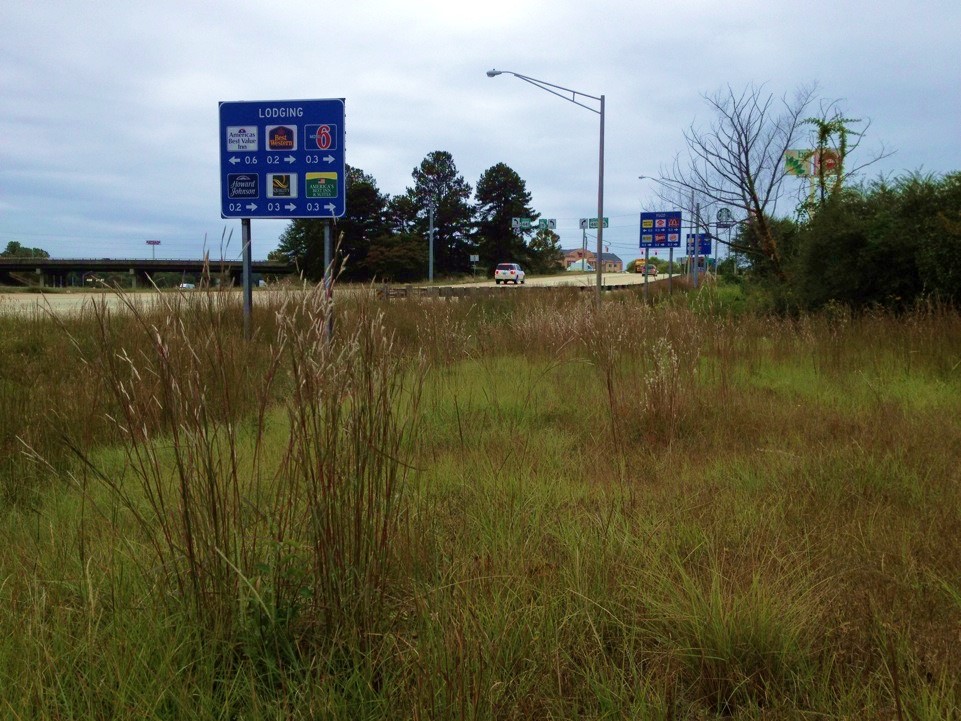Posted by Michelle Vignault
Broomsedge (Andropogon virginicus L.) is an invasive perennial weed found throughout the Southeastern United States. It has a clumped growth habit, abundant seed production, and favors acidic soils. Leaves often have soft hairs at the base with flattened sheaths that turn straw colored upon maturity in fall. Populations are often found in areas with a low soil pH (5.5 or lower).
Broomsedge is also allelopathic, meaning it will release toxic chemicals to suppress the competitive growth of neighboring plants. It may reach 3 to 4 feet in height without regular mowing, which reduces motorists’ visibility along roadsides.
Broomsedge has increased substantially in the southern United States over the last decade, especially in roadsides and non-crop areas. One major contribution to the spread of broomsedge is the use of growth regulators in roadside management. Agronomists have particularly overused imazapic (Plateau, Impose, others), an herbicide that inhibits the growth of bermudagrass to reduce mowing frequency. Despite the cost savings of imazapic use for regulating growth of roadside grasses, broomsedge is generally unaffected by these applications. Repeated use of imazapic and other growth regulators can contribute to the spread of broomsedge on roadsides due to reductions in competitive growth of desirable grasses.

Agronomists often must develop integrated management strategies consisting of cultural practices and timely herbicide use for controlling broomsedge in roadsides and industrial areas. You can remove broomsedge by digging or hand-pulling the plants. However, this is often impractical in large areas. It thrives under acidic soils (5.5 pH or less) and raising the soil pH with lime, along with proper fertility, can reduce the competitive growth of broomsedge in polyculture with other species. Mowing can also reduce the competition of broomsedge in polyculture with other species. Mowing before broomsedge produces seedheads in late summer can suppress growth and inhibit the spread of viable seed.
Selective postemergence broomsedge control in bermudagrass and tall fescue can be achieved with monosodium methylarsonate (MSMA). Two applications of MSMA at 2 lb active ingredient per acre in fall have shown to provide excellent control of broomsedge for up to one year after the initial treatments. MSMA should not be tank-mixed with other herbicides, such as imazapic, to reduce the potential for antagonism of MMSA on the broomsedge plants.
In areas with heavy broomsedge infestations, renovation may be warranted. Glyphosate at 0.75 to 1.5 lb acid equivalent per acre should be applied twice in fall at a three-week interval. Tall fescue or ryegrass could be seeded at two weeks after the second treatment as a cover crop or permanent stand, depending on the uses of the area. Imazapyr (Arsenal, others) controls broomsedge in fall, but it is a very persistent herbicide that will kill or restrict the growth of many plant species.
Enhance Broomsedge Control
Map, Spray, and Monitor
Roadside managers can use Clearion’s GPS-mapping technology to improve the identification, control, and monitoring of invasive weeds like broomsedge. This technology helps end-users make informed decisions about spray programs that improve the precision of management programs necessary for long-term control of broomsedge. The current adopters of Clearion technology have been successful at monitoring the progress of mowing crews using real-time updates and GPS-tracking. The Clearion system enables spray crews to coordinate herbicide treatments based on the location and timing of mowing operations. This information can also be overlaid with the coordinates of broomsedge populations based on pervious mapping to improve the precision of management programs. Mapping populations over time with Clearion, along with a strategic integrated management program, can help improve roadside safety and reduce inputs necessary for long-term success. Learn more at www.clearion.com
